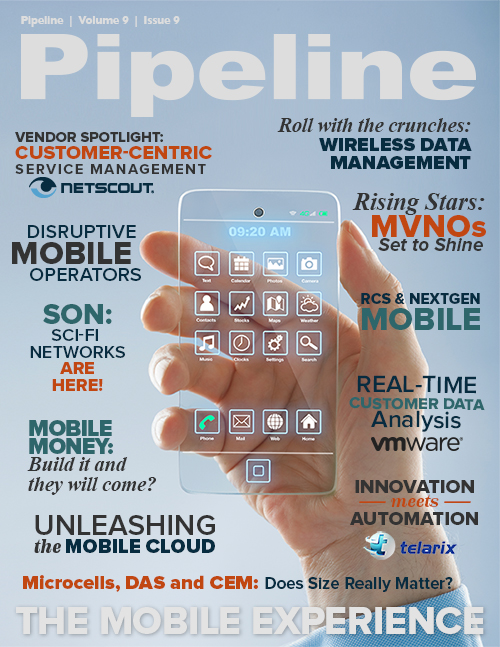Communications IT News
AT&T and Verizon also expanded their respective LTE footprints in January. According to Analysys Mason, 10 percent of AT&T’s customers are now using 4G LTE, but Verizon’s lead in this race is clear: 35 percent of its customer base currently uses the technology. Interestingly, mobile challenger MetroPCS reports that 26 percent of its base uses LTE; if it merges as planned with T-Mobile, the combined company could legitimately disrupt the market.
AT&T bought nearly $2 billion worth of spectrum assets from Verizon last month, tipping its hand on which spectra it values most for 4G. In short, AT&T is refining the focus of its LTE strategy on the 700 MHz band while dumping its AWS (advanced wireless services) assets on Verizon, which is doubling down — you may recall that Big Red spent nearly $4 billion on AWS spectra last year, scooping it up from cable companies as well as T-Mobile and Leap Wireless.
On the other side of the world a different flavor of LTE, time-division duplexing LTE (TD-LTE), is being used to achieve all kinds of feats that were unheard of in mobile several years ago. China Mobile broadcast live television coverage of the Xiamen International Marathon over its TD-LTE network at the end of January, yet another win for NSN, the sole supplier of the network. “With our advanced TD-LTE technology we ensured optimal network performance, with ultra high quality and reliability, for China Mobile to support such a mega international event with very high data traffic,” commented Markus Borchert, president of NSN’s Greater China Region.
Ciena’s high-fiber diet
When it comes to bandwidth, nothing beats fiber. Comcast and Tata Communications ramped up their network speeds with Ciena’s 6500 optical platform in January, each announcing 100G (100 gigabits per second) service. For Comcast this is the road to 400G since Ciena’s platform offers significant scalability, and for Tata it creates a fast lane on its undersea cable between London and New York. As a result, carriers on both sides of the Atlantic will have the capacity and bandwidth to launch next-gen services.
Is 2013 the year for NFC?
While its push to merge with MetroPCS continues, T-Mobile is talking near field communication (NFC), the mobile technology that enables touch-free communication and transaction. In a blog post for T-Mobile, Brad Duea, the company’s senior vice president of product management, highlighted its efforts to make 2013 a big year for NFC.
“This year, T-Mobile is bringing even more NFC capabilities to life,” he wrote. “One of the most talked-about NFC advances in 2012 was the launch of Isis, the exciting, new mobile commerce platform. Isis allows T-Mobile customers a convenient way to shop, pay and save, all with the tap of a phone. The service launched citywide test programs in Austin and Salt Lake City ... with eyes on expansion in 2013 — giving additional T-Mobile customers the chance to experience safe, secure mobile payments.”
Duea went on to describe T-Mobile’s mobile banking collaboration with Chase and its ongoing efforts with new partners in the NFC ecosystem. Sounds groovy, but is this just wishful thinking on the carrier’s part?
It’s true that more NFC-enabled devices are hitting the market, but the technology is conspicuously absent from one very popular device: the iPhone. Juniper Research believes this simple fact will set the NFC market back two years in the US.
“While many vendors have introduced NFC-enabled smartphones, Apple’s decision is a significant blow for the technology, particularly given its previous successes in educating the wider public about new mobile services,” wrote Dr. Windsor Holden, author of Juniper’s NFC report.
At the same time, there are several competitors in the mobile banking space, not the least of which is Google Wallet, but early data suggests NFC will not grow as originally predicted.



















